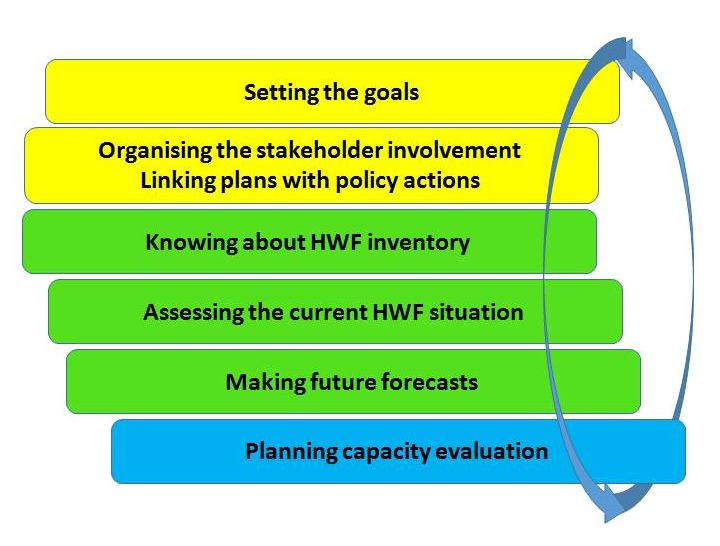
Please consider your country’s situation with respect to HWF planning. Do you experience difficulties in the abovementioned/listed steps? If yes, where? Go to Tools 1 and 2 to get closer to problematic points

The “HWF Planning Pathway Model” as an introductory tool provides a guideline that summarises general steps leading towards systematic HWF planning. Minimal and optimal steps are presented in this general level model that aim to shape a national-level framework for performance in HWF planning. This model supports the development of simple, lean processes and fosters the necessary dialogue leading to systematic action.
The “HWF Planning Pathway Model” leading towards systematic HWF planning consists of these minimal common steps:
0) Setting the goals: shall provide clear and explicit objectives (transparency);
1) Organising the stakeholder involvement and Linking plans with policy actions: focuses on legislation issues, the way how regulations can be implemented in policy; and stakeholder involvement covers strengthening commitment with accountability;
2) Knowing about the current HWF inventory: examine data coverage (e.g. whether data collections are appropriate – how information gathering occurs, whether clear indicators exist – best available information, further cleansing necessary); review and develop data warehouse, expanded datasets and linking with additional data sources (data exchange);
3) Assessing the current HWF situation: shall conduct data analysis and HWF monitoring (environment scan, reflecting changes, interpretation of data and trends);
4) Making future HWF forecasts: introducing forecasting models (basic planning principles, simple scenarios with HWF to population ratio); and
5) Planning capacity evaluation: covers regular revisions of the HWF planning system (maintain, evaluate, refine: impact assessment).


